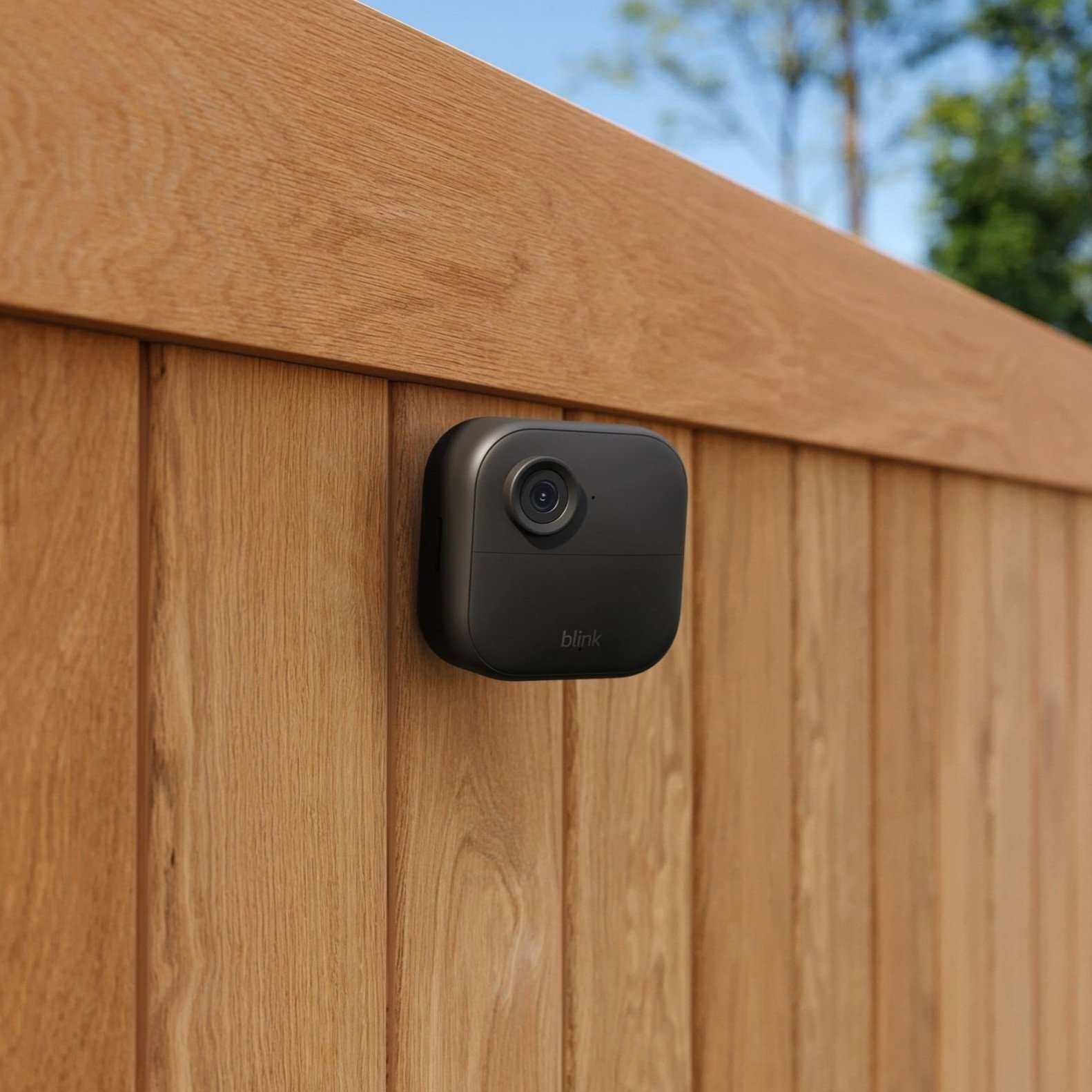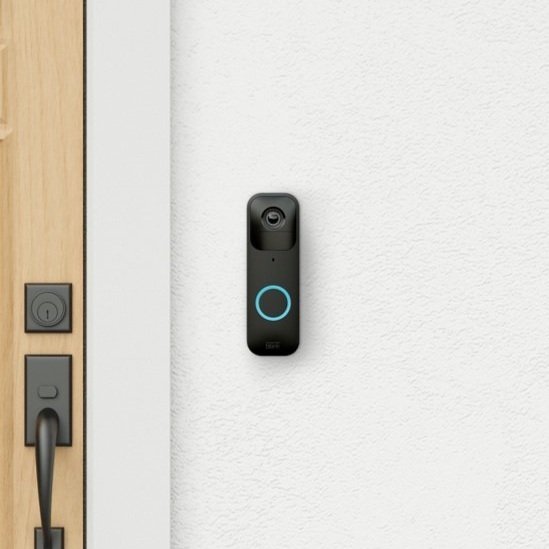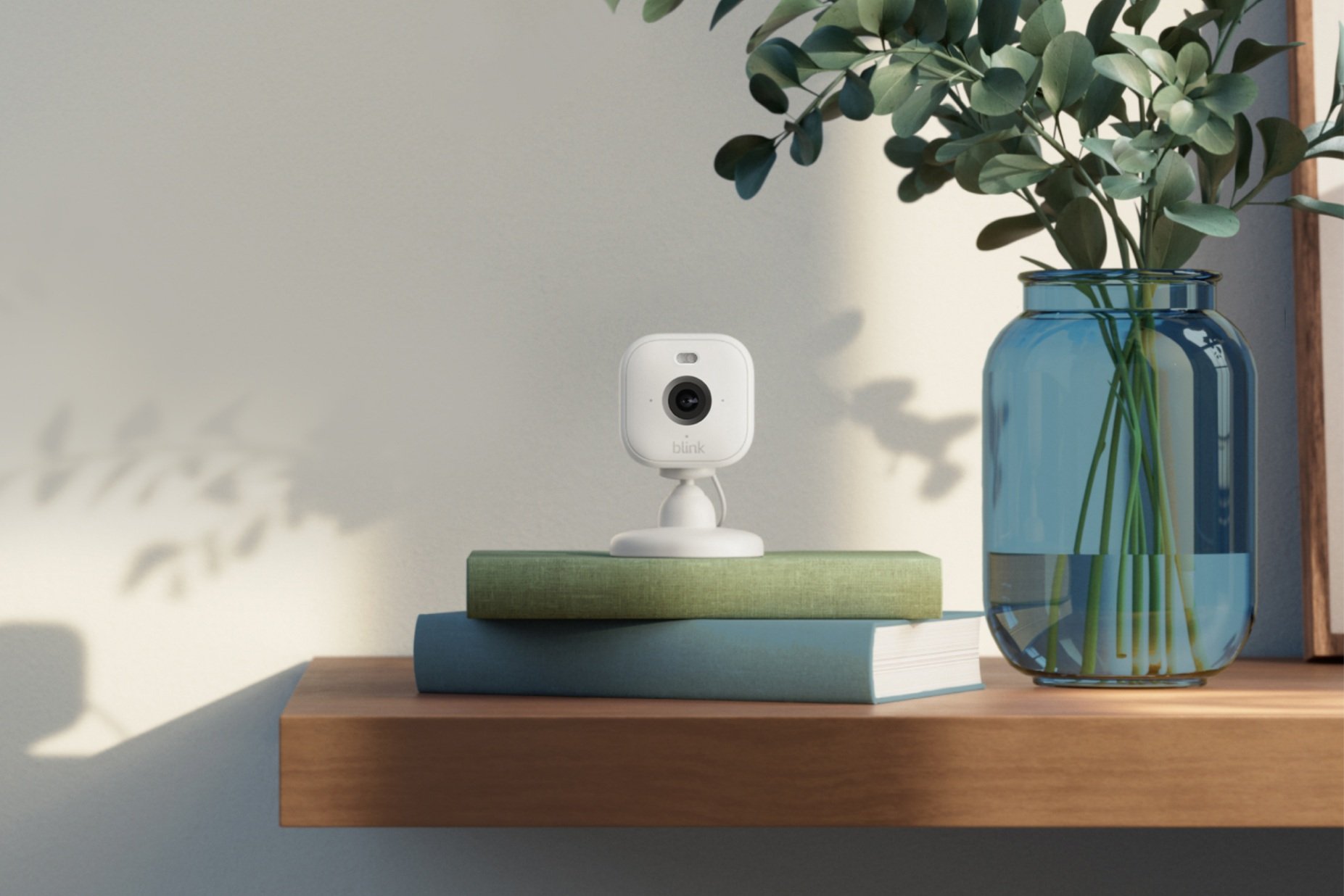



Be there
from anywhere
The fourth generation of our all-time best-selling camera is here!

Mini 2
Blink's plug-in indoor and outdoor smart security camera
Subscriptions
Find your Blink subscription plans, premium features and storage options info here

Outdoor 4 Camera
(4th Gen)

Wired Floodlight Camera
Help protect your home day or night

Mini
Blink's plug-in smart security camera

Video Doorbell
Answer your door wherever you are

Outdoor & Indoor Cameras
(3rd Gen)

Sync Module
Local Video Storage Options
Blink App
Using and troubleshooting the Blink app

Accessories
Camera add-ons

Alexa
Monitor your Blink system, hands-free, with your Alexa-enabled devices
Setting up your Blink devices
Getting started with your Blink devices

Blink Devices (1st Gen)
XT2 - XT - Indoor (1st Gen)
FAQ
Answers to common questions about Blink

Troubleshooting
Quickly fix issues with your Blink system
Security and App Updates
It is a critical aspect of maintaining digital systems and applications.
How To Install Security Cameras in Your Home ?
Installing security cameras in your home can be a great way to enhance
safety and provide peace of mind. Here’s a general guide on
how to install security cameras:
Plan Your Camera Placement: Determine the areas of your home you want to monitor and identify the best locations for your cameras. Consider entry points, blind spots, and areas of high traffic.
Choose the Right Cameras: Select the type of cameras that best suit your needs. Options include wired or wireless, indoor or outdoor, and features like night vision, motion detection, and remote access.
Gather Necessary Equipment: Depending on your camera system, you may need cameras, a digital video recorder (DVR) or network video recorder (NVR), cables (if using wired cameras), power adapters, mounting hardware, and a monitor or smartphone for viewing.
Install the Cameras:
- For wired cameras: Mount the cameras securely using the provided hardware. Run cables from each camera to the DVR/NVR location, ensuring they are hidden or protected from damage.
- For wireless cameras: Follow the manufacturer’s instructions to connect the cameras to your Wi-Fi network. Mount them securely in the desired locations.
- Ensure cameras are positioned at the proper angle for optimal coverage.
Connect Cameras to DVR/NVR: If using a wired system, connect the cameras to the DVR/NVR using the appropriate cables. For wireless systems, follow the manufacturer’s instructions to pair the cameras with the recorder.
6. Set Up Recording: Configure your DVR/NVR to record footage based on your preferences. This may include continuous recording, scheduled recording, or motion-triggered recording.
7. Adjust Settings: Configure camera settings such as resolution, motion sensitivity, and alerts according to your preferences.
8. Test the System: Once everything is set up, test the cameras to ensure they are functioning properly. Verify that you can view live footage and access recorded footage from your DVR/NVR or smartphone.
9. Secure Access: If accessing your cameras remotely, ensure your network and camera system are secure. Use strong passwords, enable encryption, and regularly update firmware to protect against cyber threats.
10. Regular Maintenance: Periodically check your cameras for proper functioning, clean lenses as needed, and ensure cables are secure. Update firmware and software to keep your system secure and up to date.
11. Legal Considerations: Familiarize yourself with any legal regulations regarding surveillance cameras in your area, including privacy laws and restrictions on recording audio.
If you’re unsure about any aspect of the installation process, consider consulting a professional installer for assistance.
Placing Your Home Security Cameras
Placing your home security cameras strategically is crucial for
maximizing their effectiveness. Here are some tips
for optimal camera placement:

2. Cover Vulnerable Areas: Identify vulnerable areas around your property such as blind spots, dark corners, or secluded areas. Install cameras in these locations to minimize hiding spots for potential intruders.

4. Cover Perimeter: Install cameras around the perimeter of your property to monitor movement along fences, driveways, and pathways. This provides early detection of suspicious activity before it reaches your home.

6. Consider Lighting Conditions: Ensure cameras are not facing directly into bright lights or reflective surfaces, as this can wash out the image. Adjust camera placement or use glare-resistant lenses to mitigate this issue.

8. Avoid Privacy Violations: Be mindful of areas where privacy is expected, such as bedrooms and bathrooms. Avoid installing cameras in these locations to respect the privacy of your family members or guests.

10. Test Camera Positions: Before permanently mounting cameras, test different positions to ensure optimal coverage and image quality. Adjust camera angles and locations as needed to achieve the desired results.

1. Cover Entry Points: Place cameras near all entry points to your home, including doors, windows, and garage doors. This helps deter burglars and provides footage of anyone attempting to enter your home.

3. Consider Height and Angle: Mount cameras at a height that provides a clear view of the area you want to monitor while minimizing the risk of tampering. Aim the cameras downward slightly to capture faces and activities.

5. Cover Outdoor Spaces: If you have outdoor living spaces like patios, decks, or gardens, consider placing cameras to monitor these areas. Outdoor cameras should be weatherproof and have night vision capabilities.

7. Indoor Placement: Install cameras indoors to monitor high-value areas like the living room, kitchen, or home office. Consider placing cameras discreetly to avoid making occupants feel uncomfortable.

9. Use Multiple Angles: Use multiple cameras to cover larger areas or to capture different angles of the same area. This provides comprehensive coverage and increases the chances of capturing important footage.

11. Regularly Review and Adjust: Periodically review camera footage to identify blind spots or areas that may need additional coverage. Make adjustments to camera placement as necessary to maintain optimal security coverage.
Before everything else, the first step is always deciding where to put the security cameras. In fact, we do this before buying to determine things like how many cameras are needed and whether or not we need extra-long power cables. Our piece on where to place security cameras could help you with this step, but here’s a quick summary.


Placing Cameras With Hubs
- For cameras that require a hub, place the camera within an appropriate distance from the hub so that it smoothly connects over Wi-Fi or another form of connectivity. For example, the Blink XT2 must be within 100 feet of the Sync Modules to connect through the Blink Home app.
- If the camera doesn’t come with a hub, make sure that it’s close enough to the router or range extender to get a decent internet connection and speed.
- If all else fails, buy a range extender to extend the Wi-Fi.
Placing Indoor Security Cameras
- It’s preferable to put indoor security cameras on the first floor of your home.
- If you have more than one story, try to put cameras in common spaces like the main hallway or living room. In such circumstances, you are more likely to capture criminals’ faces, making it easier to bring them to justice.
- Place a camera right outside the master bedroom, as this is where valuables are most often kept.
- Mount the camera out of reach, so an intruder (or even a mischievous tween) can’t easily break or disarm it. This is especially important with cameras that keep their footage on a memory card inside the camera. Basically, any place that burglars can access via doors or windows should be covered.
- For the widest possible field of view, place cameras in corners.
- Also, put cameras on stairs to track burglars within your house.
However, we don’t recommend putting security cameras in bedrooms or bathrooms, as this can greatly compromise privacy and is illegal in some states. Keep in mind that most indoor cameras don’t work through glass, as it blocks heat-based motion detection. If you want to monitor the outside of your home, the solution is simple: There are many weather-resistant outdoor cameras available, which brings us to our next point.
Placing Outdoor Security Cameras
- Install outdoor cameras at the majority, if not all, of your home’s access and exit points. Your front and back doors should be covered, at the very least.
- Since side or rear windows are more frequently used by criminals than the front of the property, install outside cameras in your off-street windows.
- Put cameras in your backyard, front yard, and driveway.
- Refrain from filming anything other than your own property to preserve the privacy of your neighbors. Although keeping an eye on your neighbors is vital, spying on their daily activities without their consent puts the “nosy” in nosy neighbors. In addition to being unlawful, this also infringes on their own Fourth Amendment rights.
- Installing an outside camera might often be a little trickier than an inside one, especially if the outdoor camera is wall-plugged. It could be necessary to snake it inside your house or utilize an outdoor plug. An other option could be to hardwire the camera into your house.
- Whether they are wireless interior or outdoor cameras, wireless cameras are usually simple to install. Naturally, if you use batteries, make an effort to
- remember how long they usually last and when to replace them. Nevertheless, if your camera is battery-operated, at least it will continue to function during blackouts.
When selecting an outside camera, it is necessary to take positioning alternatives into account, regardless of the circumstances.
From our customers
Blink Mini 2
The Blink Mini 2 is a compact and versatile indoor security camera designed to keep your home safe and secure. With its small size and sleek design, it seamlessly blends into any room while providing powerful surveillance capabilities.
Blink Outdoor 4 Floodlight Camera
a robust security solution featuring four powerful floodlights and advanced camera technology, delivering enhanced visibility and protection for your outdoor spaces.
Blink Outdoor 4 Battery Extension Pack
With regular use, you can extend the battery life of Outdoor 4 (separately sold) by up to four years. Additionally, you may record more clips, use two-way audio more often, and do more without constantly changing batteries.
Blink Outdoor 4
 Outdoor 4 weathers the storm so you don’t have to and runs for up to two years on the two included AA batteries to help you protect your home inside and out.
Outdoor 4 weathers the storm so you don’t have to and runs for up to two years on the two included AA batteries to help you protect your home inside and out.
Blink Video Doorbell
 Video Doorbell helps you answer your door no matter where you are. Install wired or wire free and experience long-lasting battery life.
Video Doorbell helps you answer your door no matter where you are. Install wired or wire free and experience long-lasting battery life.
Blink Mini 2
 Mini 2 is our easy-to-use, tiny but mighty indoor/outdoor camera. Simply plug it in anywhere around your home for peace of mind, day and night.
Mini 2 is our easy-to-use, tiny but mighty indoor/outdoor camera. Simply plug it in anywhere around your home for peace of mind, day and night.
“We were minutes away from losing our memories, our home, and most concerning, our precious dog babies. Get yourself a camera… changed the course of my life.”
— Monica S., Blink Customer
Features of the Blink Subscription Plan

Extended Live View
This feature provides live views up to 90 minutes at a time, without user intervention, for the Blink Wired Floodlight (US only) and Mini cameras.

Unlimited video recordings
All motion detection and live view recordings are stored in the cloud. Clips stay viewable until they’re manually deleted or automatically when 60 days old (30 days in the EU/UK).

Rapid video access
Allows you to instantly watch your videos as soon as they’re recorded. Videos can be accessed with reduced-loading times from the cloud, compared to clips viewed from local storage.

Auto local storage backup
With a Sync Module 2 and USB drive inserted, copies of any new clips in cloud storage will be backed up to your USB drive every 24 hours.

Photo Capture
Allows your camera to take a photo every hour while your system is armed, which display in your clip list.

Person Detection
Available for the Blink Wired Floodlight Camera (US only). This feature uses computer vision to detect people.

10% off Blink devices
Your discount on Blink hardware and accessories is automatically applied at time of checkout when you shop

Extended warranty coverage (US and Canada)
When you subscribe to a Blink Plus Plan, the extended warranty coverage applies to all of your Blink devices when they’re within their original warranty period.



